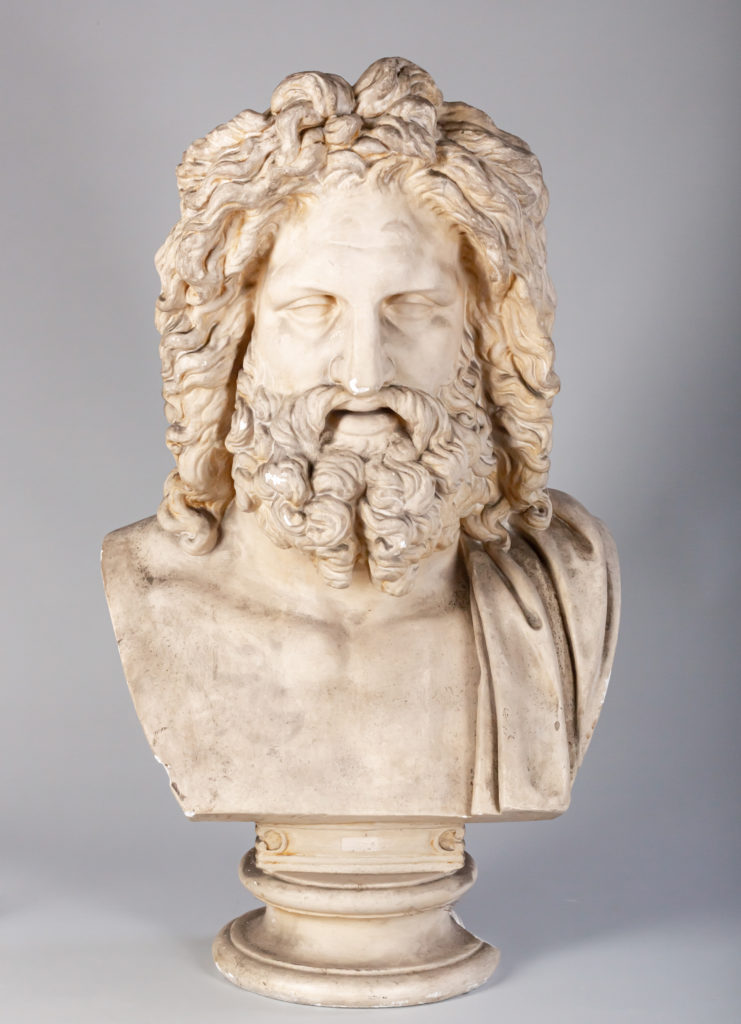Plaster cast of the Venus de Milo
Secured through the Winthrop Bequest Income
1914.14This plaster cast is a copy of one of the most renowned Greek sculptures of antiquity: the Venus de Milo. A fixture of the Louvre galleries since its discovery on the Greek island of Milos in 1820, the ancient sculpture is one of the most famous statues of the goddess to survive to the present.
Plaster casts like this one played an important part in introducing Americans to ancient sculptures from the eighteenth century through the early twentieth century. Like many colleges and museums, Bowdoin had a sizeable collection of casts by the end of the nineteenth century. Catalogues from the period indicate a collection of over two dozen casts, including the Laocöon, the Venus De Milo, the Apollo Belvedere, and, appropriately, the Marble Faun, a sculpture immortalized in the 1860 novel by Nathaniel Hawthorne (1804–1864), Bowdoin Class of 1825. Few of Bowdoin’s casts remain in the collection today, having been deaccessioned by the mid-twentieth century.
The first casts to arrive in the American colonies were likely brought for educational purposes by the Scottish painter John Smibert (1688–1751), together with paintings and drawings. It is not known when the first casts arrived at Bowdoin (the first documented casts appear in the President’s Reports of 1882), but photographs of the Walker galleries in the Bowdoin Chapel, where the art collections were installed from 1855 to 1893, show the prominent place given to these casts throughout the galleries in the early years of the college. The cast collection would continue to grow over time until the early twentieth century, with the last casts donated by Professor Henry Johnson in 1914. When the collections moved to the new Walker Art Building (1894), the casts dominated the Rotunda, intended as a sculpture hall, with the notable exception of the Marble Faun; this would be installed on its own in the Boyd Gallery, a decision no doubt inspired by the continued fame and popularity of Hawthorne’s novel The Marble Faun (1860).
By the mid-twentieth century, casts had fallen out of favor as new significance was attached to the authenticity and experience of the original object. As with institutions across the country, Bowdoin’s casts were taken off view in favor of authentic antiquities, even lesser examples of which were considered better suited for display and instruction. The Museum deaccessioned most of its sizeable cast collection during this period, likely to high schools and libraries in the Brunswick area. With the exception of a few examples—including a cast of the Venus de Milo, still used by visual arts students on campus—the fate of Bowdoin’s once sizeable cast collection is largely unknown.


